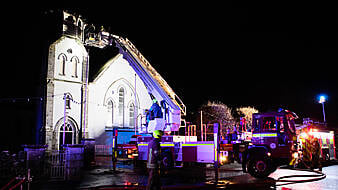Emissions from artificial light at night — which can negatively impact sleep, as well as skin and eye health — is seven times higher in Dublin than the rest of the country, but Ireland ranks far behind countries such as the UK, Portugal, and Holland, according to a new report from the Central Statistics Office.
The analysis of data from the CSO estimated artificial light in Ireland from satellite imagery over four years to 2019.
According to the EU, artificial light is composed of visible light as well as some ultraviolet (UV) and infrared radiations, and there is a concern that the emission levels of some lamps could be harmful for the skin and the eyes.
Both natural and artificial light can also disrupt the human body clock and the hormonal system, and this can cause health problems, the bloc's scientists have said.
The CSO said artificial light at night is a matter of increasing public interest, and that in recent years concerns about excessive levels of artificial lighting have driven research and legislation in countries including France and the UK.
Using ordnance survey data as well as geographical information, the CSO found that Ireland has lower artificial light emissions than other European countries such as the UK, Portugal, and the Netherlands.
Irish cities have lower light emissions than international counterparts such as London and Paris, it also found.
Dublin county has much higher light emissions than any other county however, with Pembroke South Dock and the North Inner City among the highest.
South and west Kerry and west Mayo have very low light emissions, the research found.
Dublin emissions have decreased noticeably between January 2015 and January 2019, and are far behind their European counterparts, the CSO said.
Cork, Limerick, Waterford, and Galway all have significantly lower light emission estimates than Dublin City and suburbs.
"These results tally with the levels of urbanisation and geographical distributions of the countries," the CSO said. "In the UK, there is visibly a much higher level of artificial light than Ireland due to the greater number of cities and large urbanised areas."







